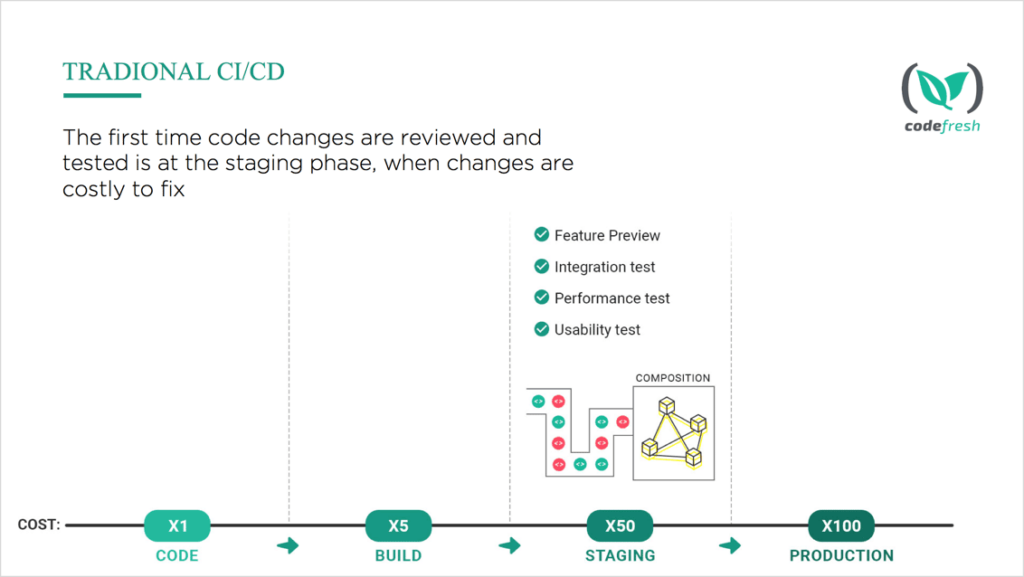In this webinar we have covered some of the common challenges with traditional continuous integration implementation. We have then discussed how we can leverage containers to accelerate the development pipeline and improve quality.
Here is the full recording
https://vimeo.com/188077097
Here’s the outline and recording of our last webinar on how to implement a Docker-Native Continuous Integration pipeline.
In the beginning, we discussed some of the main challenges associated with traditional continuous delivery for microservices. The biggest problem with traditional CI/CD is that the first time code changes and features are tested and reviewed is at staging. So every time developers make a change they have to wait to test their code for integration breaks, UI and performance at the staging environment which can lead to bottlenecks and huge delays if any issues are found at this stage.
Then we talked about how we can leverage Docker technologies to parallelize integration testing and get “feature previews” much earlier in the lifecycle, before promoting code changes or making a pull request. (When we say Feature Preview we mean that we can spin up the running environment of our feature branch and share it with the team to validate it met not only functional requirements but also business or customer needs.) Identifying gaps in the functionality, UI or breaks in the integration test in this stage can save us costly iteration later on.
To get started with CI for Docker, try Codefresh. It’s free for Open Source projects.


